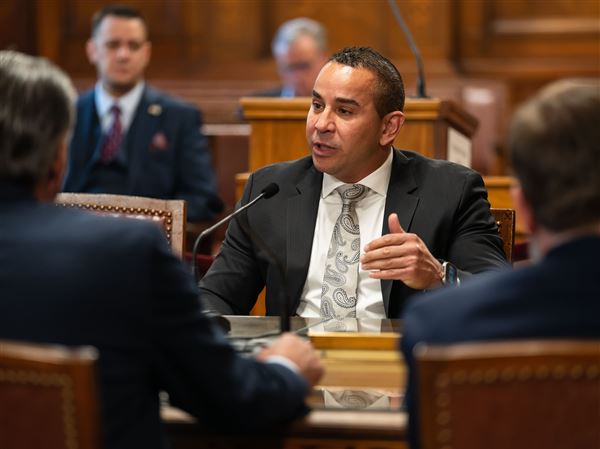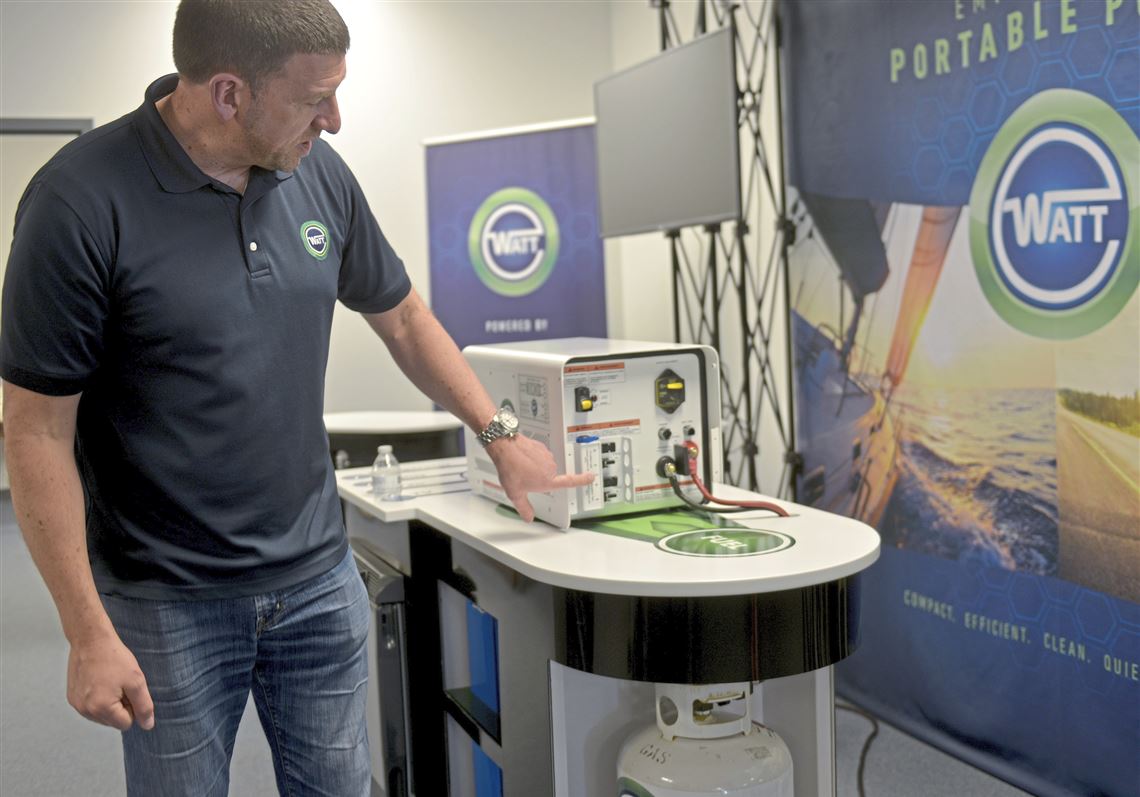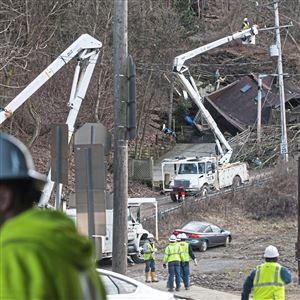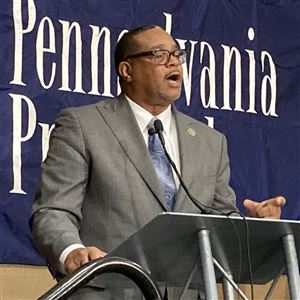Caine Finnerty has spent a lot of time on boats and in RVs in the past four years, trying to convince free-wheeling retirees and water enthusiasts to ditch their noisy diesel generators for a fuel cell — a microwave-sized box that quietly and efficiently produces electricity from natural gas.
Mr. Finnerty, CEO of Watt Fuel Cell, would then go back to a factory in Westmoreland County and have his team of chemical engineers tweak the recipe for the solid oxide fuel cell. The unit takes in natural gas and oxygen and — through a chemical reaction between a cathode, anode and electrolyte — produces power.
One day, he got a surprise visitor: Morgan O’Brien, CEO of Peoples Natural Gas, the North Shore-based utility with 700,000 customers in Western Pennsylvania, West Virginia and Kentucky.
Mr. O’Brien had been eyeing fuel cells as a chance to both increase the utility’s gas sales and to offer customers a no-emissions alternative to generators or sucking more electricity off the grid.
“We were still looking at RV and marine side and we were going to scale up from there,” Mr. Finnerty recalled. “When Morgan came in, we saw an opportunity to leap-frog a couple of years.”
What Mr. O’Brien proposed was buying 100 fuel cells and installing them in the homes of Peoples Natural Gas customers.
Mr. Finnerty couldn’t believe his ears.
“For me, having the CEO of a utility company that’s been around for like 150 years come in and be so engaged in what we were doing and our future vision for natural gas … I’m sitting there like, ‘Sign me up!’” he said.
The partnership is a leap to test the technology, which could be an alternative energy source but is not ready to appear on store shelves.
It also is a heady time for Mr. Finnerty, who has experimented with fuel cells for more than 20 years. Peoples’ backing seems like validation after his gut decision four years ago to move manufacturing from Long Island to a plant outside of Mount Pleasant in Westmoreland County.
As Mr. Finnerty tells it, he had decided within a matter of hours to purchase Pittsburgh Electric Engines Inc., a Westinghouse spin-off that worked on its own fuel cell technology for seven years. A day after meeting its president, he landed back in New York and told his staff they were moving into the Mount Pleasant Glass Center.
Using 3D printing
The cheaper real estate and the Pennsylvania company’s research and development impressed him. Combining forces, Mr. Finnerty explained, the plant churns out fuel cells more efficiently.
The conventional method for producing a fuel cell required many steps and many hands.
For each individual ceramic fuel tube about the size of a cigarette, engineers mixed the cathode into a chemical dough and extruded it like rigatoni. Then they painted a layer of electrolyte and a layer of cathode. It took about 300 hours for one rod.
Today, Watt uses 3D printing to manufacture the rods as one component — a process that takes three minutes. It also allows Watt to quickly alter the design and composition of the rods through tiny changes to a computer file.
“We just took a whole bunch of cost out of this whole thing,” Mr. Finnerty said, showing off a finished fuel cell system: the tubes packaged inside a box like a computer tower, connected to solar panels and a battery.
Watt’s process made it ripe for experimentation from Peoples’ perspective.
“We’ve always been looking for technology that fits that space,” said Jeffrey Nehr, the company's vice president of commercial operations. “It checks three boxes for us: savings for the customer, cleaner environmental impact and resiliency.”
Peoples will assess various sizes of fuel cells as large as 1.5 kilowatts, which the utility believes would allow its typical customer to meet their average electric consumption. That size could also double the natural gas consumption for its typical residential customer — and double gas sales for Peoples, Mr. Nehr said.
The utility expects customers to save money because it’s more efficient to generate their own electricity with a fuel cell than to pay for electricity generated by large power plants and delivered over miles of power lines.
Into customers’ homes
Peoples hopes to begin installing the 100 fuel cells this summer, hooking up the boxes to customers’ gas lines.
Customers who are interested can contact the utility, Mr. Nehr said. There’s also more information at www.peoples-gas.com/fuelcells.
Mr. Finnerty declined to provide the cost of producing a fuel cell or what Peoples offered to pay. Mr. Nehr said that is still under negotiation.
A collaboration between natural gas utility and fuel cell company has never happened before in the U.S., said Shailesh Vora, technology manager at the National Energy Technology Laboratory, a research arm of the U.S. Department of Energy that has a campus in South Park.
Though fuel cells are no longer a nascent technology, they still have a way to go, Mr. Vora said. Generally, the department has found smaller installations less cost effective than larger ones that spread equipment costs over a bigger system.
In May, the NETL team, working with a fuel cell company, will deliver a 200-kilowatt system to be tested at the NRG Energy steam heat plant on the North Shore. The lab also plans to work on a one-megawatt fuel cell power plant — enough to power roughly 1,000 homes — powered by coal gas.
The goal for fuel cell manufacturers, he said, is to get the cost close to what people pay on their monthly utility bills.
Daniel Moore: dmoore@post-gazette.com, 412-263-2743 and Twitter @PGdanielmoore
First Published: April 25, 2018, 1:00 p.m.


















